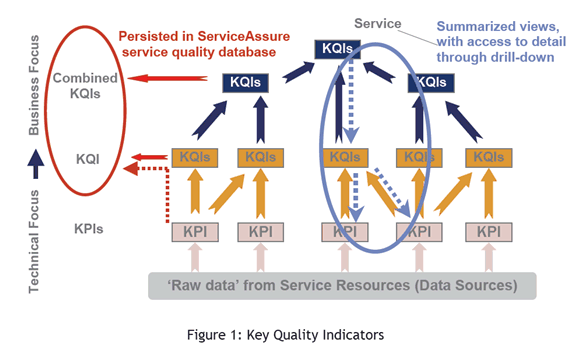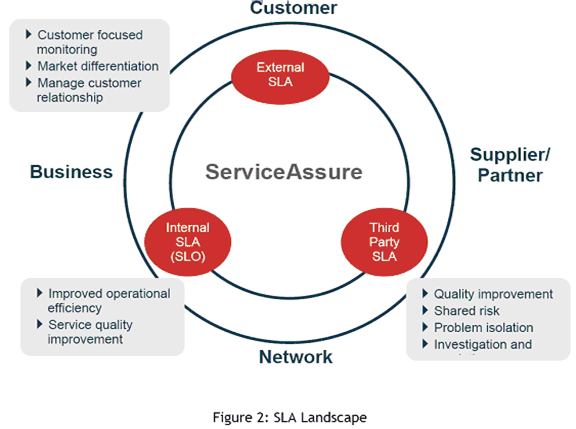| Tool Mentor: ITNSQM - Deliver Service |
 |
|
| Related Elements |
|---|
ContextTool mentors explain how a tool can perform tasks, which are part of ITUP processes and activities. The tasks are listed as Related Elements in the Relationships section. You can see the details of how processes and activities are supported by this tool mentor, by clicking the links next to the icons: DetailsIBM® Tivoli® Netcool Service Quality Manager allows the service provider environment, like Customer Care, Network Operations, to monitor service execution from the services perspective. Tivoli Netcool Service Quality Manager determines service quality by the continuous monitoring of designated quality indicators. Further, it differentiates between key performance indicators (KPIs) that are derived from network monitoring and surveillance functions, service testing and business/operations process monitoring, and key quality indicators (KQIs)used to characterize customer-centric quality of services; that is, delivered to the end customer.
The system fully supports user definition of KPIs and KQIs, and provides built-in tools to allow their definition,
testing, and application to service definitions. System adapters extract raw service quality data from the information stream obtained from each service quality data source. The communications layer, within each adapter, handles commonly occurring data communications protocols and procedures through plug-ins. The raw data is processed within the adapter into KPIs, and Adapter KQIs stored in the system Service Quality database. A KQI Combiner process is used to aggregate and combine Adapter-KQIs data to create Combined KQIs. The creation of Combined KQIs is an iterative process, allowing the system to propagate new Adapter KQI values throughout a KQI hierarchy, each level providing a more summarized view of service quality. This approach allows users to gain a high-level overview of service quality. However, as each level in the hierarchy is persisted, the original detail is also preserved and is accessible to system users who require it, through drill down methods.
In Tivoli Netcool Service Quality Manager, the quality of all services are monitored and measured through service level agreements (SLAs). An SLA is modeled as a contract for the supply of services to customers from a service provider. Three distinct types of SLAs are supported: Internal, External, and Third Party. What constitutes each is dependent on the service provider’s business processes. External SLAs model the contracts between a network service provider and its customers or subscribers. External SLAs might be used, for example, to model voice and data roaming services for specific customers. An Internal SLA can be used for various internal purposes, but are typically used to model internal supplier-consumer relationships between the different departments within the service provider environment. For example, an internal SLA might be used to model the relationship between network operations (supplier) and the roaming department (consumer). These types of SLA are sometimes referred to as internal Service Level Objectives (SLOs). Third Party SLAs model the contracts between a network operator and its suppliers, such as ASPs, ISPs, transmission providers, roaming partners, content aggregators, content providers, among others. This image shows the relationship between these types of service level contracts and the benefits they bring.
Tivoli Netcool Service Quality Manager models all three types of SLAs in the same way. By measuring them with common sets of KQIs and KPIs (but with the flexibility to set different service quality threshold values), the relationships between the different SLA applications can be exploited. For example, modeling back-to-back agreements and supporting service problem isolation. Also, by defining KPIs and KQIs independently of service models and SLA models, they can be reused across multiple service types, simplifying initial system configuration, ongoing application of the solution to new services, and system maintenance. For more informationFor more information about this tool, click IBM Tivoli Netcool Service Quality Manager at the top of this page. |
©Copyright IBM Corp. 2005, 2008. All Rights Reserved. |

